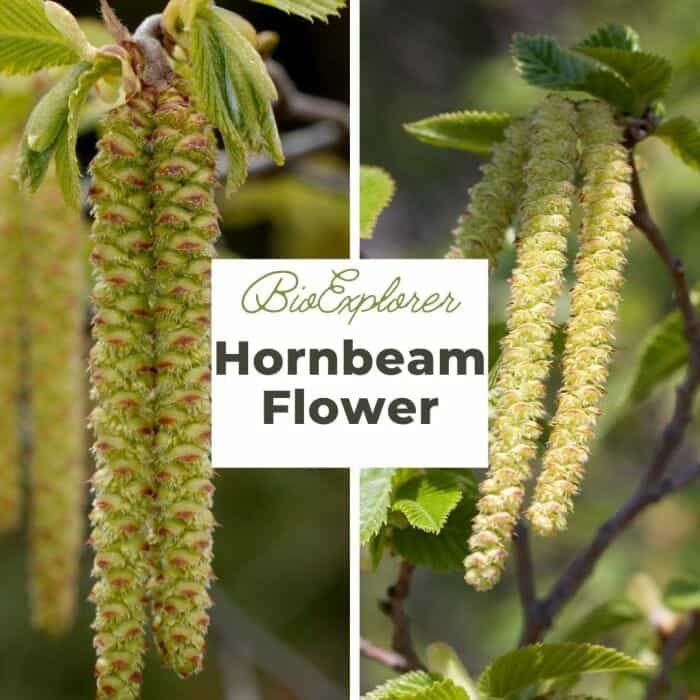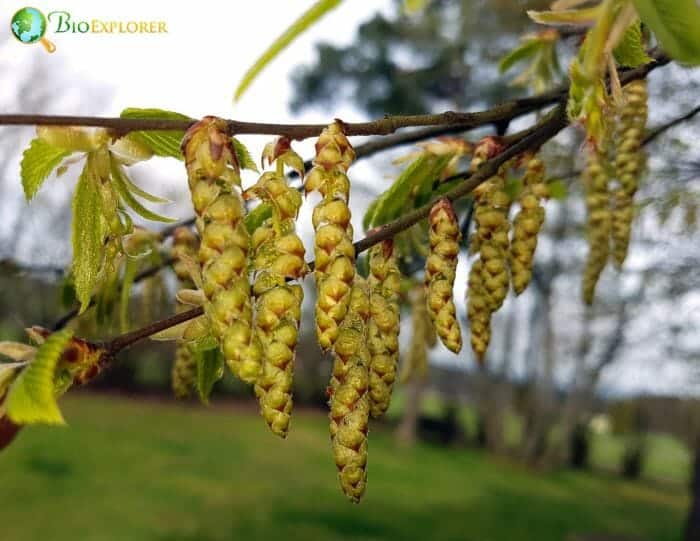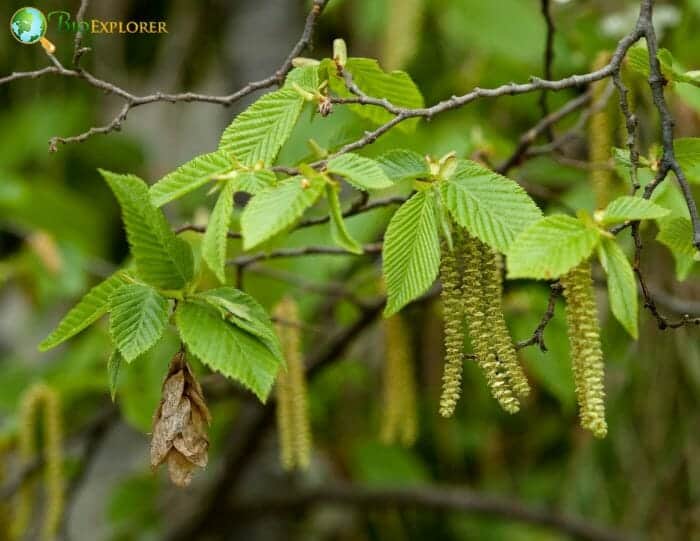
Carpinus caroliniana, commonly known as Hornbeam, is a slow-growing, trimmed medium-sized deciduous tree with an eye-catching spherical shape.

Hornbeams are deciduous trees in the Betulaceae (birch) family and the Carpinus genus of flowering plants. The 30 to 40 species of Hornbeams[1] are found throughout much of the Northern Hemisphere’s temperate regions, with the largest number of species in East Asia, especially China.

It usually grows to 20-35 feet tall. The gray, smooth trunk and thicker branches of a mature Hornbeam tree have characteristic muscle-like grooves that have given rise to the common name musclewood for this plant.
The flowers (catkins) are yellow and droopy and appear as separate female and male catkins in spring. The serrated, elliptical-oval deed green leaves sometimes produce attractive red, orange, and yellow shades in autumn.
The tough wood of the Hornbeam tree is, as the name suggests, polished like a horn and was once used by Native Americans to make ox yokes, tool handles, and bowls.











